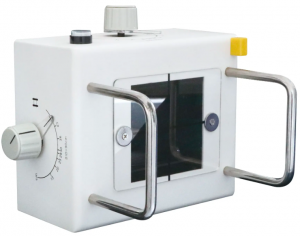In radiology, accurate imaging and patient safety are critical. A key tool that plays an important role in achieving these goals is the manual X-ray collimator. This article explores the functionality, benefits, and applications of manual X-ray collimators in medical imaging.
Learn about manual X-ray collimators:
A manual X-ray collimator is a device attached to an X-ray machine to control and optimize the radiation beam. It consists of a series of lead shutters designed to shape and limit the size and direction of the X-ray beam. It enables radiographers to precisely target specific areas and ensure optimal image quality while minimizing unnecessary radiation exposure.
Advantages of manual X-ray collimators:
Radiation safety: Manual X-ray collimators help reduce radiation doses to patients and healthcare professionals. By narrowing the X-ray beam, collimators limit the exposure of healthy tissue around the target area, thereby minimizing potential radiation risks.
Image quality: Manual collimators enhance image clarity and detail by precisely shaping and focusing the X-ray beam. Improved image quality facilitates accurate diagnosis and reduces the need for repeat imaging studies, saving time and resources.
Patient comfort: Collimators ensure that radiation is directed precisely to the intended area, avoiding unnecessary exposure to other body parts. This significantly improves patient comfort during imaging.
Cost-Effectiveness: Manual X-ray collimators help healthcare organizations and insurance providers save costs by optimizing image quality and reducing the need for repeat exams.
Applications of manual X-ray collimators:
Diagnostic radiology: Manual collimators are widely used in a variety of diagnostic imaging techniques, including X-ray, computed tomography (CT), and angiography. They help radiographers achieve precise imaging of specific anatomical areas, thereby improving diagnostic accuracy.
Radiation therapy: Manual collimators play a vital role in radiation therapy, where the radiation beam needs to be precisely focused on the tumor area while minimizing damage to healthy tissue. They help ensure targeted delivery of therapeutic doses, improving treatment effectiveness.
Interventional surgery: Manual collimators help guide catheters and other equipment during minimally invasive procedures. By precisely directing the X-ray beam, collimators enable real-time visualization, improving the safety and success of these interventions.
Progress and future developments:
Automated features: Manual collimators have evolved with technological advances to incorporate automated features such as beam size, beam angle, and real-time dose monitoring.
Remote control: Future developments may include remote control capabilities that allow radiographers to adjust collimator settings without being near the X-ray machine, further increasing user convenience and safety.
Additional safety measures: Integrating further safety measures, such as radiation detection sensors and dose optimization algorithms, can help minimize radiation risks during imaging.
In summary:
Manual X-ray collimators are important tools in radiology and play a vital role in optimizing imaging results and patient safety. By reducing radiation dose, improving image quality, and improving patient comfort, manual collimators have become an integral part of a variety of medical imaging applications. The continuous advancement of collimator technology will undoubtedly further improve imaging accuracy and promote the overall progress of radiological diagnosis and treatment.
Post time: Oct-20-2023



